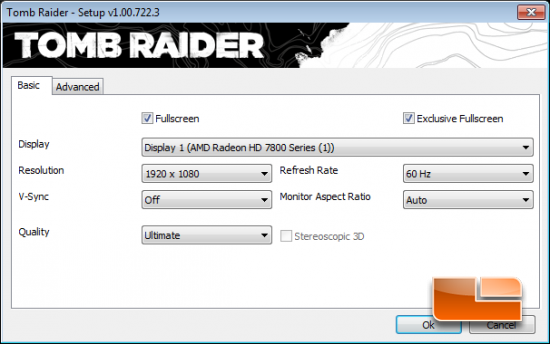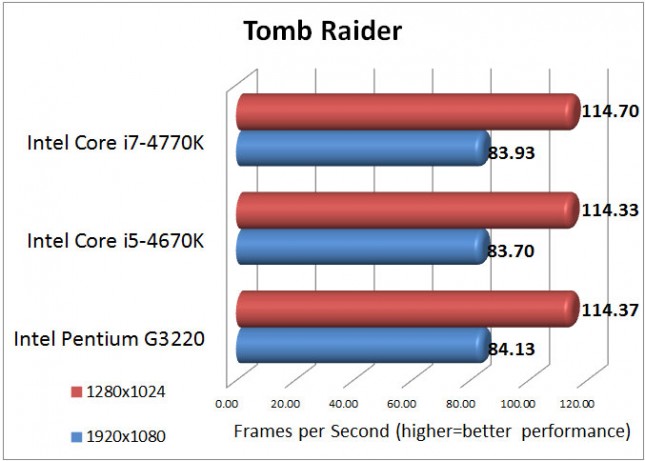Intel Pentium G3220 Processor Review
Tomb Raider

On March 5th, 2013 Square Enix released Tomb Raider, billed as a reboot of the franchise. In Tomb Raider, the player is confronted with a much younger Lara Croft who is shipwrecked and finds herself stranded on a mysterious island rife with danger, both natural and human. In contrast to the earlier games Croft is portrayed as vulnerable, acting out of necessity, desperation and sheer survival rather than for a greater cause or personal gain.

The game has been built on Crystal Dynamics’s game engine called the “Crystal Engine” and the graphics look fantastic. AMD and Crystal Dyanmic’s worked on a new technology called TressFX Hair, which AMD describes as the worlds first in-game implementation of a real-time, per-strand hair physics system for this game title. We set the image quality to ultimate for benchmarking, but we disabled TressFX Hair under the advanced tab to be fair to NVIDIA graphics cards that don’t support the feature.

Benchmark Results: In the Tomb Raider benchmark the Intel Pentium G3220 was able to squeeze out the top spot at 1920×1080 with an average of 84.13 frames per second. Though we are only talking about a difference of .43 frames per second between all three of the processors. Once we lowered the resolution to 1280×1024 there was virtually no difference in the performance of the three processors, the Pentium G3220 averaged 114.37 frames per second while the Core i7-4770K averaged 114.7 frames per second. Tomb Raider relies on the heavily on the graphics card rather than the processor, hence why we see next to no performance difference between them.
